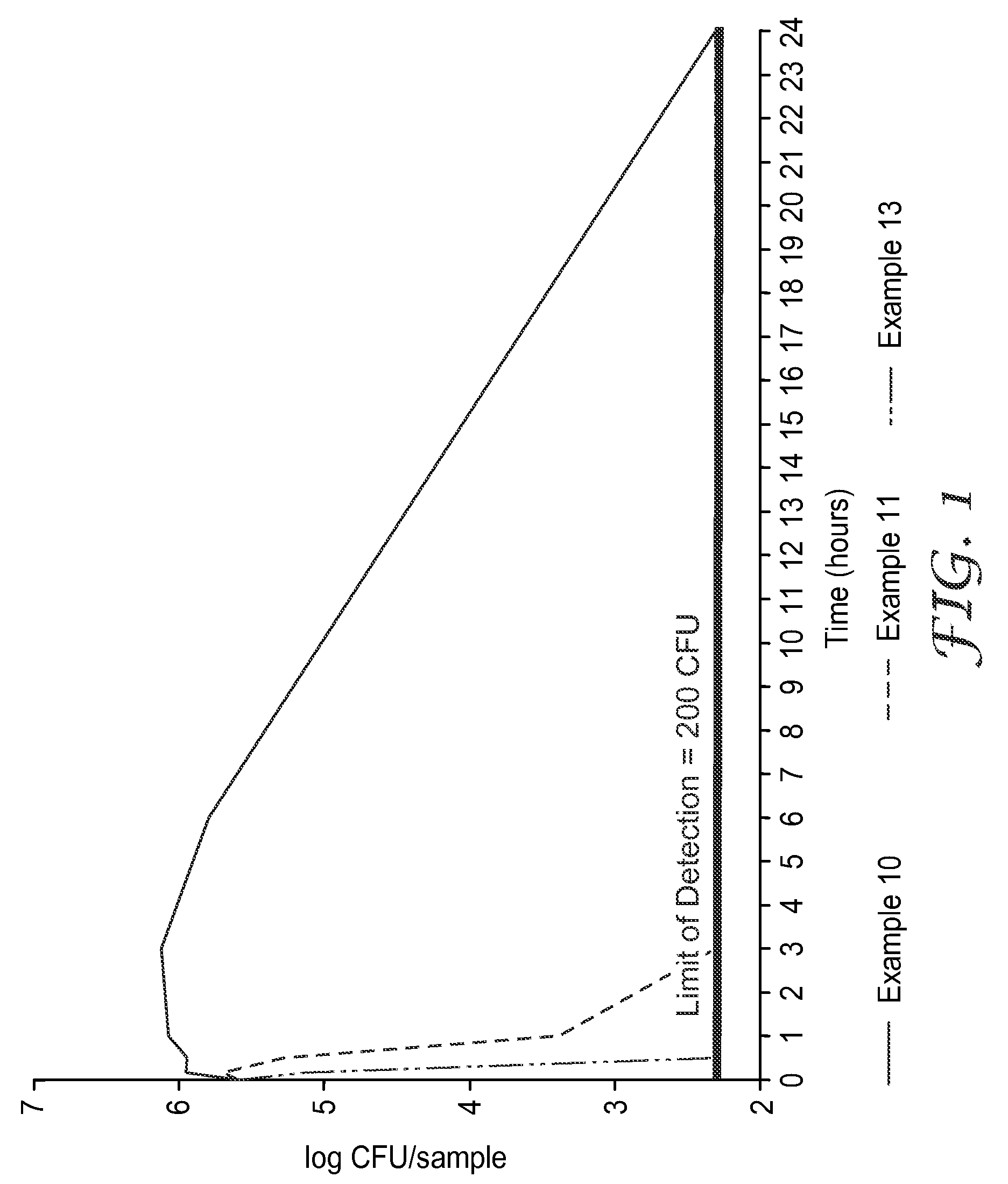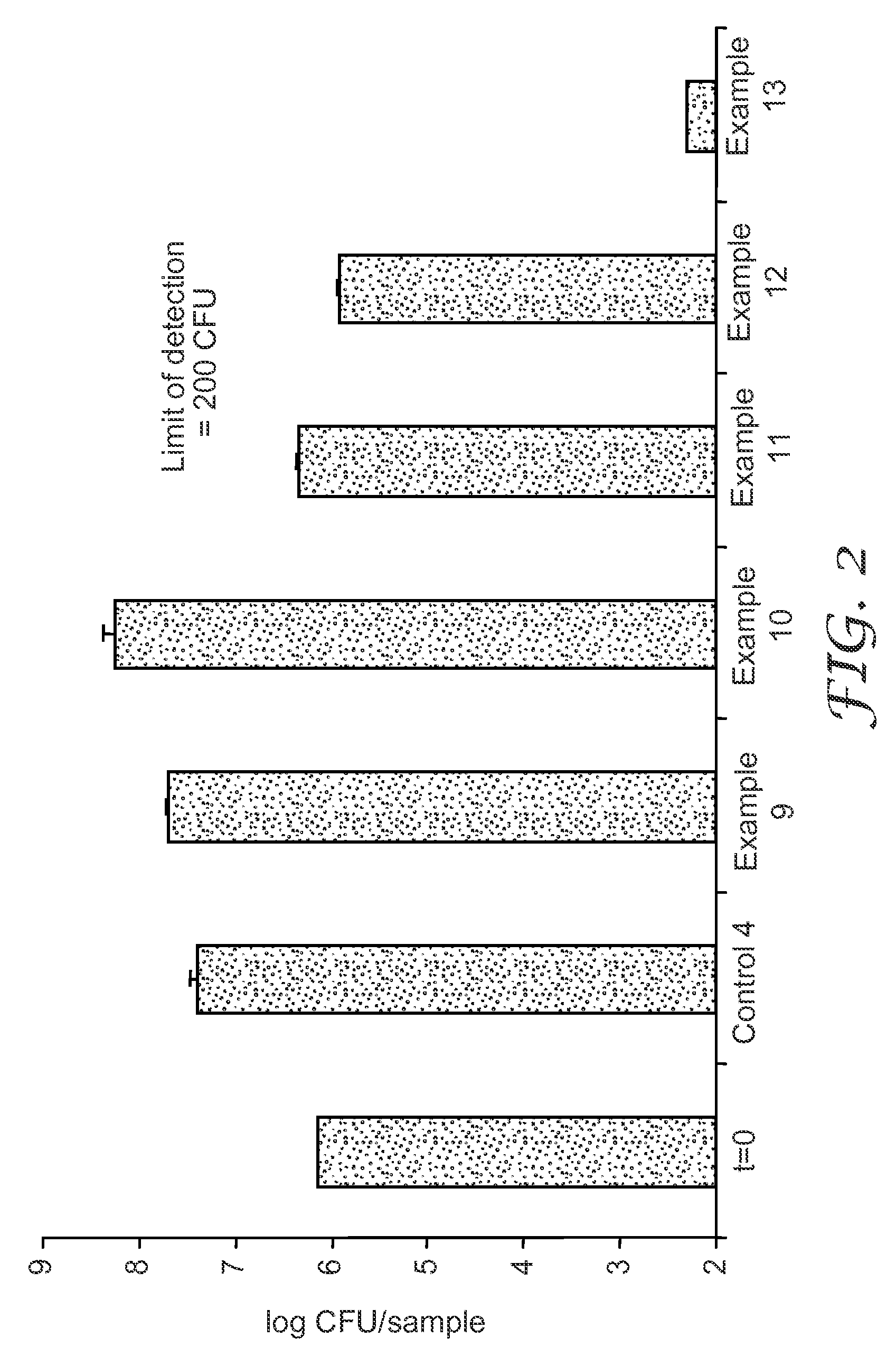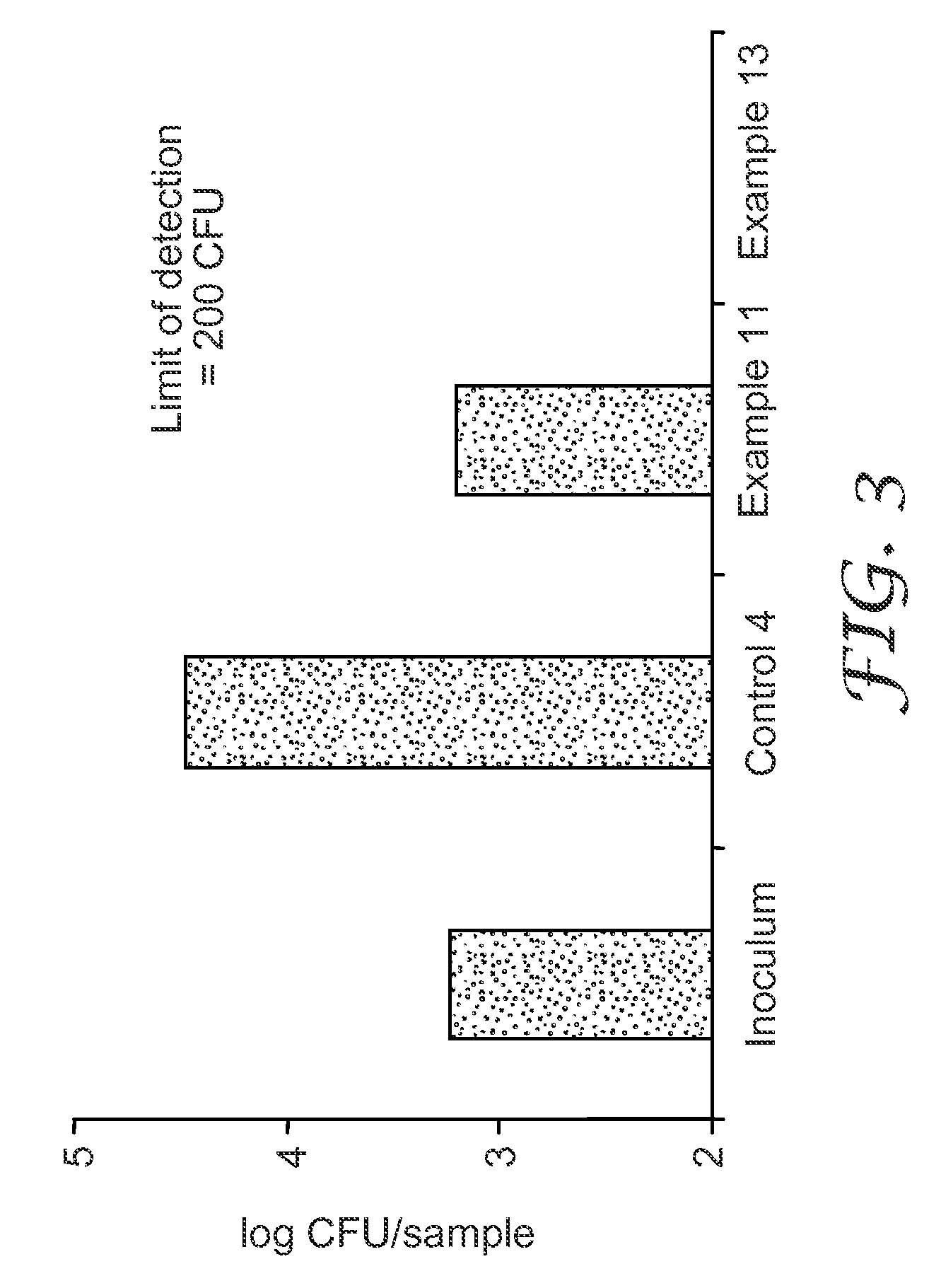Antimicrobial disposable absorbent articles
a technology of absorbent articles and antimicrobials, applied in the field of disposable absorbent articles, can solve the problems of generating malodors associated with microbial growth and metabolites, forming toxins, irritants or odors, and causing embarrassment for users of these products,
- Summary
- Abstract
- Description
- Claims
- Application Information
AI Technical Summary
Benefits of technology
Problems solved by technology
Method used
Image
Examples
examples 1 and 2
[0112]Samples were prepared using a batch Brabender mixing apparatus in which pelletized polylactic acid (PLA polymer obtained from NatureWorks LLC as Polymer 4032 D and 4060 D) was added to the Brabender mixer and blended at 180° C. until the mixing torque stabilized. The other ingredients were then added to the mixer, and the total composition was blended until it appeared homogeneous. The mixture was then pressed into sheets using a hydraulic press the platens of which were at the 177° C. Samples of the sheets were tested for microbial activity using Japanese Industrial Standard test number Z 2801: 2000 using a Gram-positive bacteria (Staphylococcus aureus ATCC #6538) and a Gram-negative bacteria (Pseudomonas aeruginosa ATCC #9027). The same test was performed on a control sheet of polylactic acid without the added ingredients. The data from this testing is presented in Table 1 below.
Antimicrobial Testing of Film Samples:
[0113]The following test protocol, adapted from JIS Z2801 (...
examples 3-5
[0118]Blown microfiber nonwoven webs were produced from the masterbatches described above using conventional melt blowing equipment. A 31 mm (screw diameter) conical twin screw extruder (C.W. Brabender Instruments) was used to feed a positive displacement gear pump which was used to meter and pressurize the aliphatic polyester polymer melt. A 25 cm wide drilled orifice melt-blowing die with 8 orifices per cm of width was used. Each orifice was 0.38 mm in diameter. Extruder temperature was 185° C., die temperature was 180° C., air heater temperature was 200° C., and air manifold pressure was 103 kPa. Total polymer flow rate through the die was approximately 3.6 kg / hr. A control sample, Control 2 was prepared containing no enhancer or antimicrobial component. A control sample, Control 3, was also prepared containing no enhancer but having an antimicrobial component. For samples having lower than 10% enhancer or antimicrobial additive, additional virgin PLA resin was added to the maste...
examples 6-8
[0119]Blown microfiber nonwoven webs were produced as in Examples 3-5 except propyleneglycol monolaurate (PML) was used as the antimicrobial component. Characteristics of the nonwoven webs are shown in Table 3 below.
TABLE 3BasisWebEffective Fiber% wtWeightthicknessDiameter*Sample% wt PMLOLGA(g / m2)(mm)(μm)Example 610101030.812.5Example 755951.115.4Example 82.52.5941.114.9
[0120]Examples 3-5 and Control 2 and Control 3 were tested for tensile strength and stiffness properties. Peak force tensile strength was measured using an INSTRON Model 5544 universal tensile testing machine using a crosshead speed of 25.4 cm / min with a gauge length of 5.1 cm. The specimen dimensions were 10.2 cm in length. Machine (MD) and cross (CD) directions of the nonwoven webs were tested. The percent elongation of the specimen at peak force was recorded. Ten replicates were tested and averaged for each sample web. Results are shown below in Table 4.
[0121]Stiffness properties of the webs were measured using a ...
PUM
| Property | Measurement | Unit |
|---|---|---|
| purity | aaaaa | aaaaa |
| weight | aaaaa | aaaaa |
| elastic | aaaaa | aaaaa |
Abstract
Description
Claims
Application Information
 Login to View More
Login to View More - R&D
- Intellectual Property
- Life Sciences
- Materials
- Tech Scout
- Unparalleled Data Quality
- Higher Quality Content
- 60% Fewer Hallucinations
Browse by: Latest US Patents, China's latest patents, Technical Efficacy Thesaurus, Application Domain, Technology Topic, Popular Technical Reports.
© 2025 PatSnap. All rights reserved.Legal|Privacy policy|Modern Slavery Act Transparency Statement|Sitemap|About US| Contact US: help@patsnap.com



